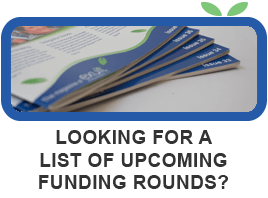Last updated August 20, 2014
In January 2010, New Zealand followed in the footsteps of Canada, Australia, the United States and the United Kingdom, and introduced pre-tax payroll giving. That means that kiwis can now make regular donations to charity before the money even hits their bank account, and their 33% tax rebate is applied immediately.
Payroll giving works as a partnership between an employer, an employee and your organisation, and there are pros and cons for every party. If your organisation is considering a push for payroll giving this year, here’s some things you’ll need to know.
1. You need to have Inland Revenue Donee Status to be able to receive donations via Payroll Giving.
In order to receive donations via Payroll Giving you need to have Inland Revenue Donee Status. Most charitable trusts will have this status, but it is not necessarily the case. If you are unsure whether your organisation is eligible for Payroll Giving donations, check out the Donee Organisations list at www.ird.govt.nz/donee-organisations/ .
2. Employers do not have to offer payroll giving as an option for their employees.
Offering a payroll giving scheme for employees is completely voluntary, and as such, not all employers offer it. If you are looking for employee donations via these businesses, you’ll first have to convince the employer of the benefits, and then dispel any myths about the scheme being difficult or expensive to administer. Before you go head first into this conversation, check out our Myth Busters below.
3. You will not necessarily know who your donors are.
Gathering donor details is really important when it comes to building relationships, and in turn, increasing support. However in the case of Payroll Giving, you may not always have access to this information.
While the employee can choose the reference they would like to appear on your bank statement, there is limited space in this field and it is likely you will need to ask the employer for more information. Be aware that the employer is not obliged to give you donor details, and in any case can only do so with the employee’s permission.
4. You need to provide the employer with a receipt once payment has been received.
While the employee paperwork is taken care of by the employer, you still need to provide a receipt for the donations made. Your receipt must be made out to the business, not to individual donors, and it must state that the funds were received via Payroll Giving. For more information about what needs to be included on the receipt, visit www.ird.govt.nz/industry-guidelines/payroll-giving/payroll-giving-donee-orgs.html
Payroll Giving offers some real benefits to employers, employees and donee organisations, but many parties have failed to make the most of the opportunity because they don’t truly understand what’s involved. When discussing the idea of Payroll Giving with your board, potential employer supporters and donors, make sure to bust these myths:
Employers have to match donations made by their employees.
No they don’t. While some employers choose to contribute alongside their employees, it is not required.
Employers have to purchase a whole new payroll system to manage Payroll Giving.
Most electronic payroll systems have been updated to manage Payroll Giving schemes, so there shouldn’t be any need to purchase new software. That said, in order to offer Payroll Giving to employees, businesses must file their monthly Inland Revenue returns electronically. The change-over to electronic returns is fairly easy, and you can find more information about this on the Inland Revenue Website.
Payroll Giving schemes are time-consuming for employers to administer.
Setting up a Payroll Giving scheme will take time, but the benefits to the employer are great. Not only will the wider community view them as a socially responsible business, offering a Payroll Giving scheme will boost staff morale as they see the company focussing on issues that are important to them.
If administration really is an issue, businesses can use a Payroll Giving intermediary to manage the process for them. Intermediaries in New Zealand include Givealittle, Internet Payroll Services, United Way NZ, and the Payroll Giving Foundation.
Employees can choose to donate to any charitable organisation they like.
Not necessarily. If the employer is managing their Payroll Giving scheme directly, they get to choose the organisations that employees can donate to via Payroll Giving. Because of the administration involved, there are usually a limited number of organisations on the list.
While most employers will allow their staff some input into which organisations are included, it is possible that not all employees will get their favourite charity on the list. If this is the case, employees can still make donations to their favourite cause, but they can not do so via Payroll Giving.
If an employer is using an intermediary to manage their Payroll Giving scheme, it is likely that employees will have a larger range of organisations to choose from. In most cases intermediaries will allow employees to make donations to any donee organisation.
Employees can’t use Payroll Giving to make a one-off donation.
Payroll Giving was established to make it easier for people to make regular planned donations, however employers can choose to make the scheme available for one-off donations if they like. This would be most likely in the case of an emergency appeal, where several staff wanted to give to the same cause.
Extract from Issue 12 of Tonic Magazine
If you think this article would be useful for your members, you are welcome to use it on your website or in your newsletter. We just ask that you let us know where it is being used, and that you acknowledge our website at the bottom of the article. If you are using the article online, please include a link to our homepage.





